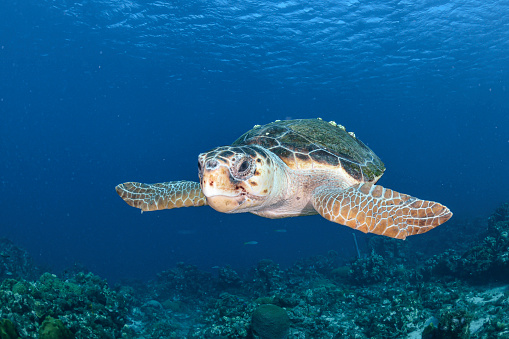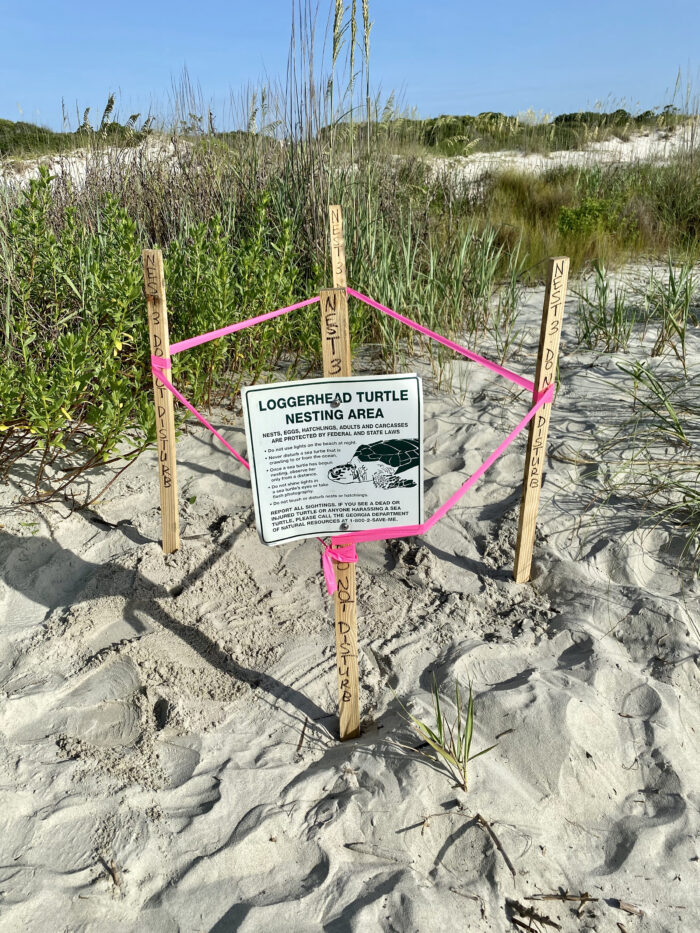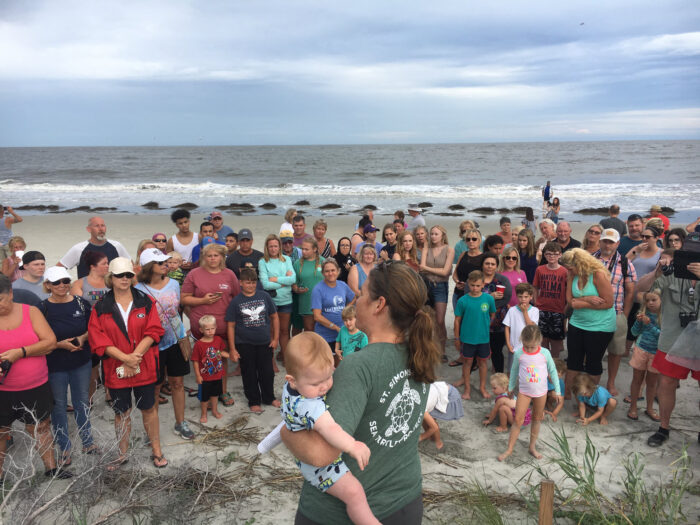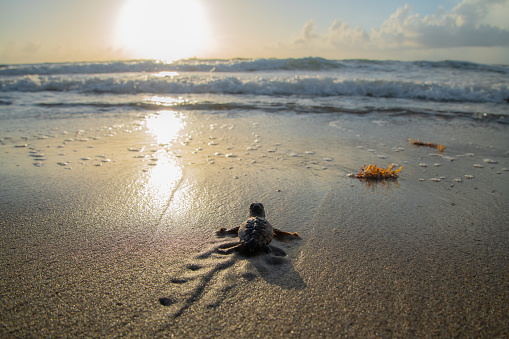Catherine Ridley: A spokesperson for sea turtles
It’s hard to imagine the successful recovery of endangered sea turtles in the South without the help of Catherine Ridley.
She has more than 20 years of experience protecting and advocating for these ancient reptiles, including her early days saving nests and hatchlings on St. Simons and Jekyll Islands, and helping launch the Georgia Sea Turtle Center in 2007. Since 2014, Ridley has spread the word about ongoing turtle conservation work — and encouraged others to take action — as the vice president of education and communications for coastal champion One Hundred Miles.

This summer, following a lawsuit from SELC on behalf of One Hundred Miles, the U.S. Army Corps of Engineers agreed to drop harmful plans related to deepening the port in Brunswick during the loggerhead nesting season. It was a huge win for recovery efforts, one Ridley celebrated with the cooperative of Georgia conservationists partnering to protect sea turtles.
“We spent time reflecting on what the victory means for all our turtles across the coast, especially the nesting mothers we’ve invested so much in for 30 years or more,” she says. “We were able to do a lot of the work on the ground, but we wouldn’t be in this position without SELC.”
Despite making tremendous progress toward recovery, Southern sea turtles are still threatened by loss of nesting habitat, pollution, vessel strikes, rising temperatures, and accidental capture by commercial fishing. Hear from Ridley about the ongoing work to protect them, plus one of her most magical memories.
How many types of turtles are there along the Southeast coast?

Five primary species can be found throughout the Southeast. These include the loggerhead, our most common nesting species, and green sea turtles, which are nesting in increasing numbers in Florida and occasionally into Georgia. The leatherback sea turtle, the largest sea turtle species, and the Kemp’s ridley, which is the smallest and most endangered, are infrequent nesters in Georgia. The hawksbill turtle is primarily a tropical nester, and like the name implies, they have a hawk-like beak for feeding on sea sponges that live in coral reefs.
What makes the East Coast special for sea turtles?
A few things about our coast make it a great spot for nesting turtles. We have a string of protected barrier islands with relatively dark beaches that mostly haven’t been overdeveloped the way you might see along the Florida coast.
What draws you to do this work?

I still remember seeing my first loggerhead sea turtle emerging from the ocean. It was one of those micro-moments where I could see the trajectory of my life shifting.
Being even a small part of this effort is much bigger than myself, and tied to past generations of conservationists and the wildlife they helped preserve — and to the future I hope my children can have with these incredible animals. The more you feel a part of that story, the harder it is to break away from it.
Favorite Southeastern turtle species?
I probably have the biggest soft spot for the loggerhead because most of our work centers around them and I’ve been fortunate enough to meet many on our beaches.
There’s still a lot of work left to do, but the 50th anniversary of the Endangered Species Act is a good opportunity to reflect on the progress we can make when science is our guide.
Catherine Ridley
Can you share a favorite turtle memory?
Times where it’s just me and a nesting turtle on the beach aren’t that frequent anymore, but those memories are some of my most memorable and cherished experiences of my career and life. Decades ago, I remember being on Jekyll Island alone in the dunes with a female loggerhead laying eggs. As I checked her flippers for tags to see if she had been encountered before, I brushed against some of the sand and Epibiota (organisms living on another organism) that had accumulated on her carapace. Suddenly, her shell lit up the night sky in blue-green waves. Brushing off the bioluminescent plankton created the natural light.
How has the Endangered Species Act made a difference in sea turtle survival?

It requires that the best possible science is at the core of decision-making and establishes comprehensive recovery plans, which consider not only potential harm to the species, but also impacts to the critical habitat on which the animals rely. When dangerous issues come up that threaten them, like year-round dredging or coastal development, the ESA gives us the framework for pushing back.
And it works. Look at the tremendous progress loggerheads and other species have made in the last five decades. There’s still a lot of work left to do, but the 50th anniversary of the ESA is a good opportunity to reflect on the progress we can make when science is our guide.
